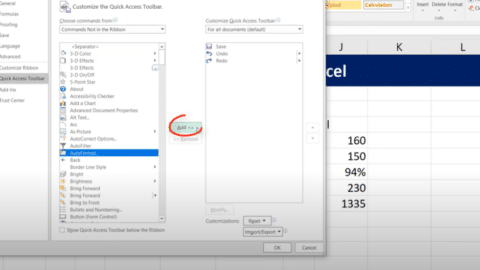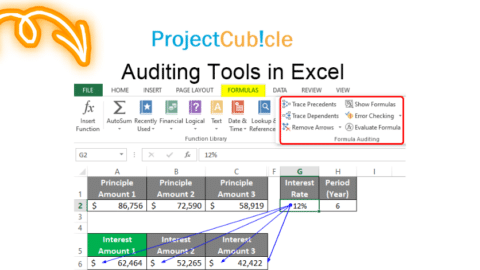Creative Title: The Ultimate Guide to the DAY Excel Function: How to Use It and Why It Matters
For good reason, Excel is one of the world’s most popular data analysis tools. With its vast array of functions and features, Excel can help you analyze data quickly and accurately, making it an indispensable tool for businesses, researchers, and individuals. One of the most useful functions in Excel is the DAY function, which allows you to extract the day from a date.
Table of Contents
Whether you’re new to Excel or a seasoned pro, this guide will teach you everything you need to know about the DAY Excel function, from how to use it to its benefits.
What is the DAY Excel Function?
The DAY Excel function is a built-in function that allows you to extract the day from a date. It’s part of a group of functions called Date and Time functions, designed to help you work with dates and times in Excel. Also, the DAY function takes a date as its input and returns the day of the month as a number between 1 and 31.
To use the DAY function, you need to provide it with a valid date value. Also, you can do this by typing a date directly into a cell or referencing a cell containing a date.
How to Use the DAY Excel Function
For good reason, Excel is one of the world’s most popular data analysis tools. With its powerful functions and intuitive interface, Excel makes it easy to analyze large amounts of data and create professional-looking reports. However, many Excel users are unaware of the full range of functions available to them and may be missing out on some powerful tools to make their work more efficient and accurate.
Also, one of these powerful tools is the DAY function, which allows you to extract the day of the month from a date. This may seem simple, but it can be used in various ways to make your Excel spreadsheets more effective. This guide will show you how to use the DAY function to its full potential.
Using the DAY Excel function is straightforward. Here’s the basic syntax:
=DAY(serial_number)
Where serial_number is a date value that you want to extract the day from.
For example, if you have a date in cell A1 and you want to extract the day from it, you can use the following formula:
=DAY(A1)
This will return the day of the month as a number.
Why the DAY Function Matters
The DAY function is useful and can help you analyze your data differently. Here are just a few examples of how you can use the DAY function in Excel:
- Calculating the number of days between two dates: By using the DAY function to extract the day of the month from two dates, you can easily calculate the number of days between them.
- Filtering data by day of the month: By using the DAY function in combination with other functions like FILTER or SORT, you can easily filter your data only to show entries from a specific day of the month.
- Analyzing trends over time: Using the DAY function and other functions like AVERAGE, you can easily analyze trends over time to see if certain days of the month are more profitable or productive than others.
Benefits of Using the DAY Excel Function
The DAY Excel function can be incredibly useful when working with dates in Excel. Also, here are just a few of the benefits it provides:
- Simplifies data analysis: By extracting the day from a date, you can more easily analyze data based on specific days of the month. This can be especially useful for tracking sales, expenses, or other financial data.
- Saves time: Instead of manually extracting the day from a date, the DAY function allows you to do it quickly and easily.
- Reduces errors: Because the DAY function is built into Excel, you can be sure that it will return accurate results every time.
- Increases flexibility: By extracting the day from a date, you can perform a wide range of calculations and analyses based on specific days of the month.
DAY Excel Function Example
Let’s say you’re tracking sales data for your business and want to analyze sales by day of the month. You have a table with the following data:
| Date | Sales |
|---|---|
| 2023-01-01 | $100 |
| 2023-01-02 | $200 |
| 2023-01-03 | $300 |
| … | … |
To extract the day from the date, you can use the following formula in a new column:
=DAY(A2)
This will return the day of the month as a number. Also you can then use this data to perform various calculations and analyses based on specific days of the month.
The Basic Syntax of the DAY Function
The DAY function is a built-in function in Excel that allows you to extract the day of the month from a date. The basic syntax of the DAY function is as follows:
=DAY(serial_number)
The “serial_number” argument in this function is the date you want to extract the day from. Also, this argument can be entered in several formats, including as a date in quotation marks, as a reference to a cell containing a date, or as a formula that returns a date.
For example, if you want to extract the day from the date “January 15, 2023”, you would enter the following formula:
=DAY("1/15/2023")
This formula would return the value “15”, which is the day of the month.
Advanced Applications of the DAY Function
While the basic syntax of the DAY function is simple, this function can be used in various ways to make your Excel spreadsheets more effective. Here are just a few examples of the advanced applications of the DAY function:
Calculating the Number of Days Between Two Dates
One common use of the DAY function is calculating the number of days between two dates. Furthermore, to do this, you can subtract the earlier date from the later date, and then use the DAY function to extract the day of the month from the result.
For example, if you have two dates in cells A1 and B1, you can calculate the number of days between these dates with the following formula:
=DAY(B1-A1)
This formula will return the number of days between the two dates, including the fractional part of the result. If you want to round the result to the nearest whole number, you can use the ROUND function, like this:
=ROUND(DAY(B1-A1),0)
This formula will return the number of days between the two dates, rounded to the nearest whole number.
Calculating the Number of Days Until a Future Date
Another common use of the DAY function is to calculate the number of days until a future date. To do this, you can subtract the current date from the future date. Also, then use the DAY function to extract the day of the month from the result.
For example, if you want to calculate the number of days until December 31, 2023, you can use the following formula:
=DAY("12/31/2023")-DAY(TODAY())
This formula subtracts the current day of the month from the day of the month for December 31, 2023, giving you the number of days until that date.
Filtering Data by Day
The DAY function can also filter data in Excel by the day of the month. For example, if you have a list of transactions that includes the date of each transaction, you can use the DAY function to filter the list to show only transactions that occurred on a specific day of the month.
To do this, you can use the FILTER function in Excel and the DAY function. For example, if you want to filter a list of transactions to show only transactions that occurred on the 15th day of the month, you can use the following formula:
=FILTER(transactions, DAY(date)=15)
This formula filters the “transactions” range to show only rows where the day of the month in the “date” column is equal to 15.
Calculating the Day of the Week
In addition to calculating the day of the month, the DAY function can also be used to calculate the day of the week. Also, you can use the WEEKDAY function in Excel and the DAY function to do this.
For example, if you have a date in cell A1 and you want to calculate the day of the week for that date, you can use the following formula:
=WEEKDAY(A1)
This formula returns a number between 1 and 7, where 1 represents Sunday, 2 represents Monday, and so on.
FAQs about the DAY Excel Function
Q: Can the DAY Excel function extract the day of the week?
A: No, the DAY Excel function only extracts the day of the month. You can use the WEEKDAY function to extract the day of the week from a date.
Q: What format must the date value be in for the DAY function to work?
A: The DAY function can work with dates in various formats, including text, serial numbers, and date values. However, it’s important to ensure that the format is consistent throughout your data, as Excel may not recognize dates in certain formats.
Q: Can I use the DAY function to extract the day from a range of dates?
A: Yes, you can use the DAY function with other functions, such as SUM or AVERAGE, to perform calculations based on a range of dates.
Q: Can the DAY function be used with dates that are before January 1, 1900?
A: No, the DAY function can only be used with dates that are after January 1, 1900, which is the earliest date that Excel recognizes.
Q: Can I format the result of the DAY function to display the day as a text string?
A: Yes, you can use the TEXT function to format the result of the DAY function as a text string. For example, if you want to display the day as “01” instead of “1”, you can use the following formula:
=TEXT(DAY(A1),"00")
Q: Is the DAY Excel function case-sensitive?
A: No, the DAY function is not case-sensitive. Moreover, you can use uppercase or lowercase letters when entering the function name.
Conclusion
The DAY Excel function is a simple yet powerful tool that can help you analyze and understand data more effectively. Also, by extracting the day from a date, you can perform various calculations and analyses based on specific days of the month, making it an essential function for businesses, researchers, and individuals.
In this guide, we’ve covered everything you need to know about the DAY Excel function, from what it is and how to use it to the benefits it can provide. So whether you’re a beginner or an experienced Excel user, add the DAY function to your toolkit and explore its potential today.
Hello, I’m Cansu, a professional dedicated to creating Excel tutorials, specifically catering to the needs of B2B professionals. With a passion for data analysis and a deep understanding of Microsoft Excel, I have built a reputation for providing comprehensive and user-friendly tutorials that empower businesses to harness the full potential of this powerful software.
I have always been fascinated by the intricate world of numbers and the ability of Excel to transform raw data into meaningful insights. Throughout my career, I have honed my data manipulation, visualization, and automation skills, enabling me to streamline complex processes and drive efficiency in various industries.
As a B2B specialist, I recognize the unique challenges that professionals face when managing and analyzing large volumes of data. With this understanding, I create tutorials tailored to businesses’ specific needs, offering practical solutions to enhance productivity, improve decision-making, and optimize workflows.
My tutorials cover various topics, including advanced formulas and functions, data modeling, pivot tables, macros, and data visualization techniques. I strive to explain complex concepts in a clear and accessible manner, ensuring that even those with limited Excel experience can grasp the concepts and apply them effectively in their work.
In addition to my tutorial work, I actively engage with the Excel community through workshops, webinars, and online forums. I believe in the power of knowledge sharing and collaborative learning, and I am committed to helping professionals unlock their full potential by mastering Excel.
With a strong track record of success and a growing community of satisfied learners, I continue to expand my repertoire of Excel tutorials, keeping up with the latest advancements and features in the software. I aim to empower businesses with the skills and tools they need to thrive in today’s data-driven world.
Suppose you are a B2B professional looking to enhance your Excel skills or a business seeking to improve data management practices. In that case, I invite you to join me on this journey of exploration and mastery. Let’s unlock the true potential of Excel together!
https://www.linkedin.com/in/cansuaydinim/










